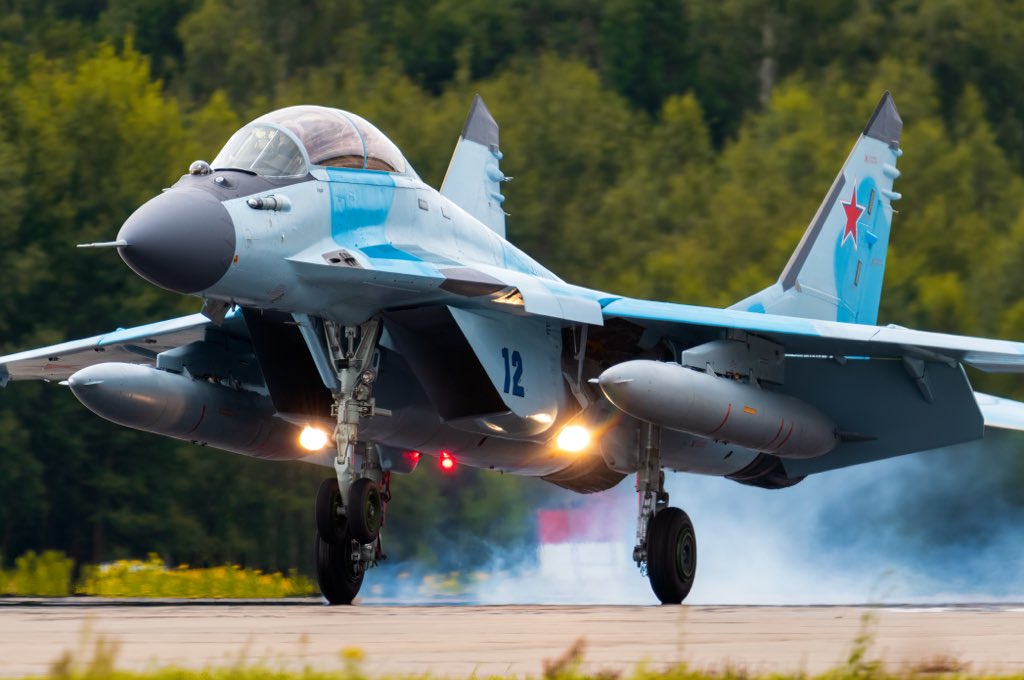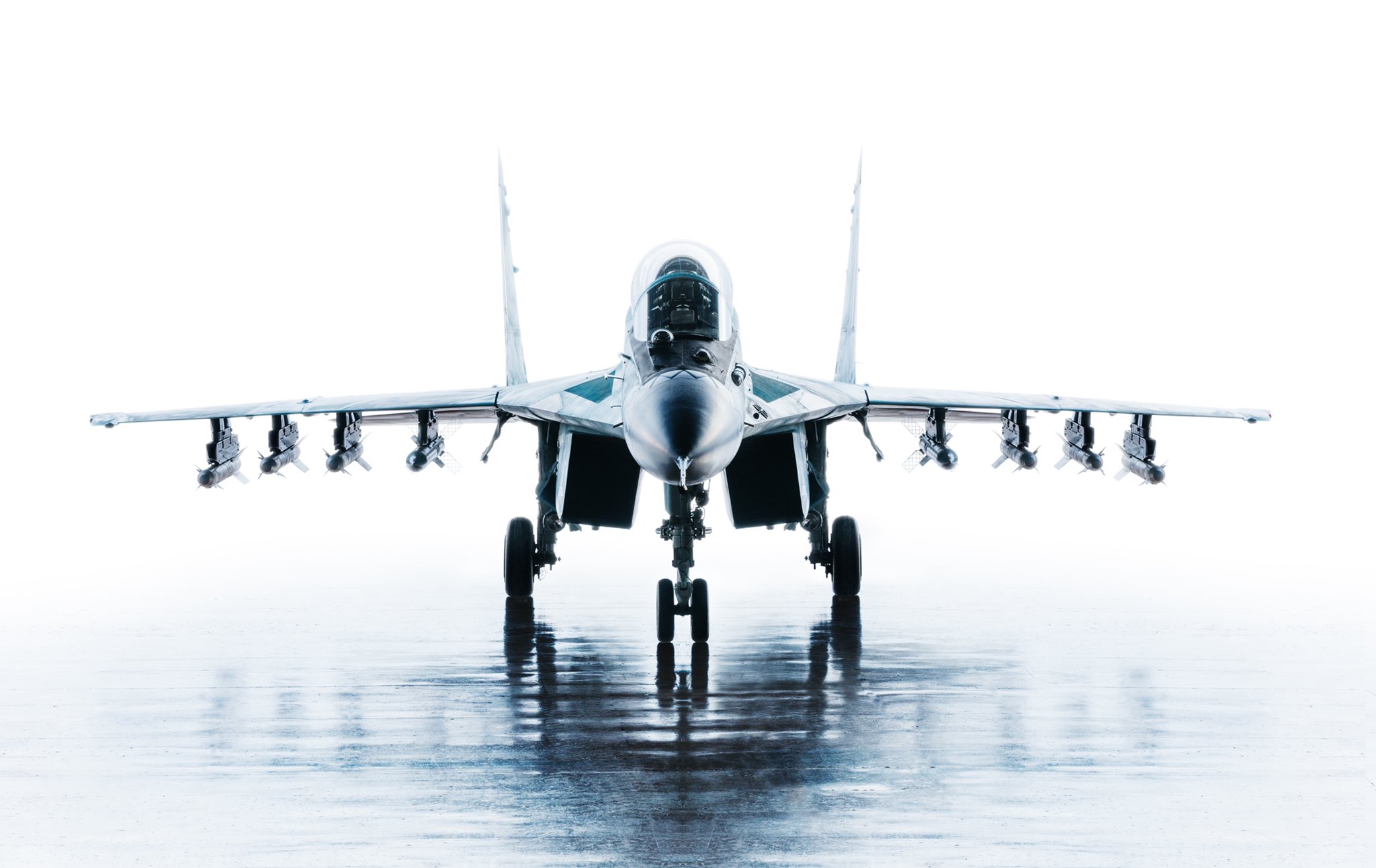Nearly all advanced fighter jets in Russia’s arsenal are pressed into service in the ongoing Ukrainian conflict. While Moscow has not been able to achieve complete air superiority owing to Ukraine’s air defense, it has given the Ukrainian Air Force a hard time.
Combat aircraft ranging from the fighter Interceptor MiG-31, which can fire hypersonic missiles, to the advanced heavy-duty fighter jets like the Su-30, Su-34, and Su-35, have been deployed for combat.
The fifth-generation stealth Su-57 fighter jet has also reportedly completed some “multifaceted tasks,” according to the Russian MoD.
Besides these modern and cutting-edge fighter jets, Russia has also deployed Soviet-era Su-24, Su-25, and Su-27 fighter jets. The updated MiG-29s have also been entrusted with denying any aerial advantage to Ukraine.
However, one Russian fighter jet has been absent from the battlefield. The famed MiG-35 of Russia, a 4++ generation aircraft that could have come in handy for the Russian Aerospace Forces (VKS), has been reported missing in action by the media.
The aircraft is one of Russia’s newest and most versatile fighter aircraft known by the NATO codename ‘Fulcrum.’
While the MiG-31 Fulcrum has remained absent from combat, it has been sent to China for display at its ongoing Zhuhai Air Show. Russia has sent four advanced fighter jets, including the Su-57 Felon fifth-generation fighter, MiG-35 Fulcrum-F, Su-35 Flanker-E, and Su-34 Fullback amid a raging war against Ukraine.

Out of all the Russian aircraft on display at the Chinese air show, only the MiG-35 has never seen combat. Although the media is essentially going gaga over the Su-57 stealth fighter, the MiG-35 is the aircraft that ought to generate more discussion and inquiries concerning its presence.
The MiG-35 was publicly revealed in 2007 during the Aero India air show in Bengaluru. The aircraft’s development has been noticeably sluggish, with the earliest manufacturing starting in 2013 or 2014 and the first successful flight not taking place until 2017.
Even though the MiG-35 is touted as the highly upgraded version of the MiG-29K/KUB and MiG-29M/M2, there have been rumors that some Russian Air Force squadrons have chosen “heavyweight” Su-30SM Flankers rather than upgrading from their outdated MiG-29s to the MiG-35.
The MiG-35 is far from the original plans to make it the default “lightweight” fighter for the Russian Aerospace Forces (VKS). It is also unclear how the MiG-35 fits into the VKS order of battle with only one frontline MiG-29 unit remaining.
The Fulcrum could potentially be permanently earmarked for export because of the apparent struggle the aircraft has faced in Russia and supposedly among the Russian air troops.
In 2019, an export variant of the MiG-35 was demonstrated at the MAKS-2019 air show. With its entry into the iconic Zhuhai Air Show, Moscow looks set to scout for buyers.
What Do We Know About MiG-35 Fulcrum?
The MiG-35 was designed as the MiG-29’s successor and is likely most famous for being the first fighter to join Russian service since the 1980s, which was not a heavyweight jet.
Due to the end of the Cold War and a severe cash crunch, Russia was compelled to forgo developing lighter aircraft in favor of larger Sukhoi fighters like the Su-30, Su-34, and Su-35.
It was anticipated that the testing of the MiG-35 would be finished by the end of 2018 or the beginning of 2019 and that Moscow would place an order for at least 30 aircraft. But as of now, only six prototypes and eight Fulcrum Fs in serial production have been finished.
The fourth-generation multirole MiG-35 aircraft from Russia is known for being extraordinarily sophisticated and using some fifth-generation technologies. The fighter is available in two configurations, a single-seat, and a twin-seat, that look identical.

Two Klimov RD-33MK after-burning turbofan engines with swivel nozzles and a thrust-vectoring control (TVC) system are used to power this war machine, making it easy to maneuver and more combat-survivable. Additionally, the smokeless RD-33 engines reduce their visibility.
The range of the Fulcrum F is 2,000 kilometers and 3,100 kilometers when fitted with external fuel tanks. It has a top speed of 2,400 kilometers per hour. It can perform various tasks, including surveillance, targeted ground attacks, and air superiority.
It can carry a variety of rockets, air-to-air missiles, air-to-surface missiles, and guided and unguided bombs, among other weaponry.
This comprises guided Kh-31A anti-ship missiles, guided Kh-31P anti-radar missiles, guided Kh-29TE missiles, guided Kh-29L air-to-surface missiles, and guided KAB-500Kr TV and laser-guided bombs.
The avionics aboard the Fulcrum has also been greatly enhanced. One such system is the new Phazotron Zhuk active phased radar, which can detect numerous targets and is impervious to electronic defenses.
Fulcrum’s Export Potential
The MiG-35 has several upgrades made with the export market in mind. The new information-sighting system, similar to a fifth-generation capability, gives the MiG-35 enhanced intelligence and connectivity with other Russian weapon systems. It is arguably the most significant modification.
Additionally, the MiG-35 includes an OLS-UEM that helps with infrared target detection. The OLS-UEM can find targets on land, in the air, or at sea; it can even find targets in the air 55 kilometers away.
The MiG-35’s ability to require substantially less maintenance than the MiG-29 may be its most significant selling point, making it cheaper to run and train pilots than the MiG-29.
According to the Mikoyan Design Bureau’s general director, Sergei Korotkov, the designers “have done a lot to increase the life of the aircraft and reduce the operation cost, which is essential for the light fighter. An additional competitive advantage of MiG-35 is the possibility of exploiting MiG-29 infrastructure.”

In July last year, Russia officially offered its MiG-35 export variant to India for its MMRCA tender, as reported by EurAsian Times. The MiG-35 was to compete against the French Rafale, American F/A-18 and F-15, Eurofighter Typhoon, Saab Gripen, and perhaps even the Su-35. However, there has been little progress on that front.
In contrast to other fighters developed by Russia, this aircraft had no flaws or accidents. Amid the testing for this fighter, Russia anticipated orders; however, they never came.
Even though the first overseas clients were anticipated to be Egypt and India, the MiG-35 entered a fierce contest with the F-16, F/A-18, Eurofighter Typhoon, and JAS 39 Gripen when there was not a single production model of it, according to Bulgarian Military news.
That being said, alongside other fighters that Russia has been trying to market to friendly countries, it could be the time to shine for the MiG-35 Fulcrum, with potential customers showing interest after the Zhuhai Air Show.
- Contact the author at sakshi.tiwari9555(at)gmail.com
- Follow EurAsian Times on Google News




